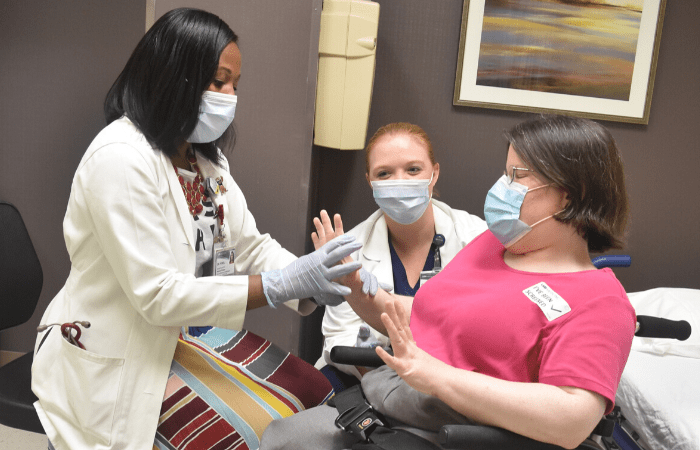
“Freedom possesses many meanings. It speaks not merely in terms of political and religious liberty but also in terms of economic and social progress.” –Robert Kennedy
July 26 will mark an important date in the history of our nation. Thirty years ago, in 1990, the Americans with Disabilities Act (ADA) was signed into law by Pres. George H.W. Bush. Inspired by the Civil Rights Act of 1964, the ADA is a civil rights law that prohibits discrimination against individuals with disabilities in all areas of public life, including jobs, schools, transportation, and all public and private places that are open to the general public. Seeking to change the paradigm of persons with disabilities in this nation, this law has mandated change and created opportunities for inclusion and to right social injustices among persons with disabilities.
Under the ADA, a person with a disability is a person who has a physical or mental impairment that substantially limits one or more major life activities. In this context, disability is a legal term and one that was not fully expanded until approximately 20 years later. In 2008, the ADA Amendments Act (ADAAA), signed into law by Pres. George W. Bush, sought to broaden the coverage for individuals and counter the Supreme Court’s narrow interpretation of disability. This was an effort to further decrease discrimination. Amber Clark, MD, a physician in the UAB Department of Physical Medicine & Rehabilitation, cites the importance of the law, stating that “the ADA has provided a platform that brings awareness to disparities in health among persons with disabilities.”
The Centers for Disease Control & Prevention (CDC) reports that 61 million Americans are living with a disability, and the highest percentage of them are in the South. Unfortunately, though some progress has been made with improvements in accessible buildings, transportation, playgrounds, and employment, disparities remain. Persons with disabilities are at higher risk of being victims of violent crime, unemployment, cardiovascular disease, and obesity, as well as having less access to medical care. Also, race often contributes to even greater disparities in care.
Persons with disabilities also face large employment gaps compared to the general population, which directly affects income and access to affordable and safe housing. As with other forms of discrimination, those who do not identify as having disabilities are often shown favoritism. Ableism is an ever-present reality within this population and a source of significant frustration for many. It is a reminder that work still needs to be done to level the playing field and truly provide opportunities and freedom for all.
Advocacy is Key
The field of physical medicine and rehabilitation (PM&R) is well-positioned to advocate for persons with disabilities. Our field is built upon the premise of improving independence, enhancing quality of life, and restoring function to our patients. At UAB, the Department of PM&R provides unique services to patients with disabilities from across the southeast. We treat patients with a wide range of diagnoses, including musculoskeletal pathologies, traumatic brain injuries, spinal cord injuries, strokes, neuromuscular diseases, and cancer, to name just a few. We are fortunate to serve a diverse patient population, and we strive to provide the best services and care that we can. At times, however, we too are faced with challenges in the medical and legal systems that prevent our patients from receiving optimal care.
So, here we sit in 2020 – 30 years following passage of the ADA. As of late, we are living in the midst of a global pandemic, civil unrest, and uncertainty on a daily basis. Yet, in chaos, opportunities for progress to effect positive change are always created. These times have been difficult for everyone. Among persons with disabilities, however, these issues are often magnified as disparities and only increase during times of distress.
What can be done? It first must be noted that there is hope, and where there is hope, there will always be progress. It is important that we begin by taking personal inventory of our intrinsic biases and seek to truly educate ourselves on disabilities and the challenges that persons with disabilities face. We then must have conversations – not out of guilt but out of genuine curiosity to understand. Other opportunities include getting involved with advocacy at the local, state, and federal levels.
- Disability Rights and Resources helps individuals develop self-advocacy skills and advocates for people with disabilities at the local, state, and national levels. Birmingham is the headquarters for the organization, and there are three additional centers in our state (Huntsville, Montgomery, and Mobile). Additional advocacy organizations are listed below:
- ADAPT
- Alabama Autism
- Alabama Council for Developmental Disabilities (ACDD)
- Alabama Disabilities Advocacy Program (ADAP)
- Autistic Self-Advocacy Network
- People First of Alabama
- Lakeshore Foundation
Produced by UAB Medicine Marketing/Communications (learn more about our content).
